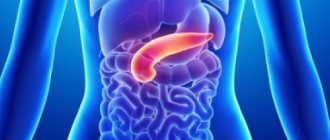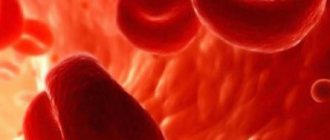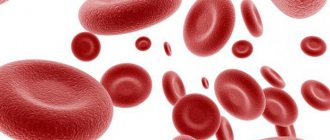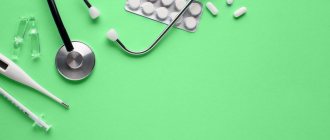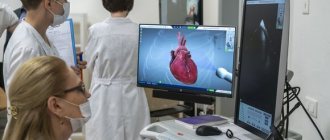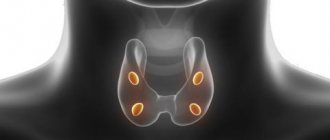Rules for preparing for some laboratory tests include strictly specific recommendations on lifestyle, food intake, liquids and medications.
The most complete recommendations for preparing for the studies you need can be obtained by placing a pre-order.
Preparing for blood tests
Influence of preanalytical factors on the result
- Hemolysis
- Lipemia
- Ictericity
- Test "LIH" (LIG)
Preparing for urine tests
- Single sample urine tests
- Daily urine tests
Preparing for stool tests
- Microbiological and PCR studies
- General clinical and antigen studies
Preparation for urogenital smear tests
- Urogenital urethral smear in men
- Smear from the urogenital tract in women
Preparation for analysis for enterobiasis
Preparation for semen analysis
- Microbiological and PCR studies
- Spermogram
Preparing for sputum tests
Preparation for analysis of buccal (buccal) epithelium
Preparation for submitting biomaterial for cytological studies
- Smears (scrapings) from the surface of the cervix (external uterine pharynx) and cervical canal for atypia
- Aspirate from the uterine cavity
Preparing for hair tests
- Determination of narcotic, psychotropic and potent substances and genetic establishment of relationship
- Microelement composition studies
General rules for preparing for blood tests
Influence of preanalytical factors on the result
Eating. Eating on the eve of taking blood for analysis can greatly distort the result, and in some cases lead to the impossibility of performing research. This is explained by the fact that after nutrients are absorbed in the intestines, the concentration of proteins, fats, carbohydrates and other compounds in the blood increases sharply, enzyme systems are activated, blood viscosity may change, and the level of some hormones temporarily increases. All these factors can directly affect the concentration of the test substance, and also, due to changes in the physical properties of the blood itself (its “transparency”), lead to incorrect measurement of the analysis by the device.
Each of the tests has its own preparation features - they can always be found in the KDLmed catalog or the medical knowledge base, however, in all cases, before donating blood, it is recommended to adhere to several rules:
- do not eat fatty foods several hours before the test, it is advisable not to eat for 4 hours - a high concentration of fats in the blood can interfere with any test;
- shortly before taking blood, drink 1-2 glasses of ordinary still water - this will reduce the viscosity of the blood and it will be easier to take a sufficient volume of biomaterial for research; in addition, it will reduce the likelihood of clots forming in the test tube.
Medications. Any medicine affects the body in one way or another, sometimes on metabolism. And although, in general, the effect of drugs on laboratory parameters is known, much is determined by the physiological characteristics of a particular person, as well as the presence of diseases. Therefore, it is almost impossible to accurately predict how study results will change depending on any drug.
In this regard, it is recommended:
- If possible, stop taking medications at least 24 hours before the test;
- When taking tests while taking medications, you must indicate this fact on the referral form.
Physical activity and emotional state. Any physical activity leads to the activation of a number of enzyme and hormonal systems. The concentration of many biologically active substances in the blood increases, internal organs begin to work more intensively, and metabolism changes. Against the background of stress, the sympatho-adrenal system is activated, which, in turn, triggers mechanisms leading to changes in the activity of many internal organs, to the activation of enzyme and hormonal systems. All this can affect the test results.
In order to exclude the influence of physical activity and psycho-emotional factors on the day of testing, it is recommended:
- do not play sports;
- eliminate increased emotional stress;
- a few minutes before taking blood, take a comfortable position (sit down), relax, calm down.
Alcohol and smoking. Alcohol has a variety of effects on the human body. It affects the activity of the nervous system, which, as is known, regulates all physiological processes occurring in the body. The products of alcohol metabolism can affect many enzyme systems, cellular respiration, and water-salt metabolism. All this can lead to changes in the concentration of most biochemical parameters, changes in the level of hormones in the general blood test, etc. Smoking, by activating the nervous system, increases the concentration of certain hormones and affects vascular tone.
To exclude the influence of alcohol and smoking on test results, you should:
- refrain from drinking alcohol for 72 hours before taking the test;
- do not smoke at least 30 minutes before taking blood.
Physiological state of a woman. The concentration of sex hormones and their metabolites in a woman’s body changes significantly over the course of a month. In this regard, tests for many hormonal indicators are recommended to be taken strictly on certain days of the menstrual cycle. The day of blood donation is determined based on which part of hormonal regulation needs to be assessed.
Another important physiological condition that influences research results is pregnancy. Depending on the week of pregnancy, the concentration of hormones and some specific proteins in the blood and the activity of enzyme systems change.
To obtain correct test results, it is recommended:
- clarify the optimal days of the menstrual cycle (or pregnancy period) for donating blood for follicle-stimulating hormone (FSH), luteinizing hormone (LH), progesterone, estradiol, androstenedione, 17-hydroxyprogesterone, prolactin, as well as specific markers: inhibin B and anti-Mullerian hormone;
- When filling out the referral form, it is necessary to indicate the phase of the menstrual cycle or the duration of pregnancy - this guarantees obtaining reliable research results with correctly indicated ranges of normal (reference) values.
Times of Day. The concentration of many substances in the human body changes cyclically throughout the day. This applies not only to hormones, but also to some biochemical parameters and specific markers (for example, metabolic markers in bone tissue). For this reason, it is recommended to take some tests strictly at certain times of the day. If a laboratory indicator is monitored, it must be repeated at the same time. The table below provides recommendations for the timing of blood sampling to determine various laboratory parameters.
Hemolysis
In the KDLmed laboratory, before performing most tests, a study is carried out to determine the degree of lipemia, icterus and hemolysis of blood samples, and therefore often questions arise from clients about what these blood conditions are and why KDLmed cannot perform the analysis at certain values of the above indicators.
What is hemolysis? Hemolysis, as a laboratory concept, is the destruction of red blood cells ("red blood cells") in a blood sample, releasing various biologically active substances and, most importantly, hemoglobin into the plasma.
Why does hemolysis occur? Hemolysis is most often caused by the physiological characteristics of the human body who donated blood, as well as by a violation of the blood sampling technique.
Reasons related to the blood sampling technique leading to hemolysis:
- applying a tourniquet for too long a time;
- traces of a disinfectant solution (alcohol) remain on the surface of the skin at the site of venipuncture;
- mixing the blood in the test tube too intensely;
- centrifugation of blood not according to established preanalytical rules (at too high speeds, longer than necessary);
- taking blood with a syringe and then transferring it into a vacuum tube;
- violation of the capillary blood collection technique (too intense pressure near the puncture site, collecting blood from the surface of the skin with the edge of a microtube, etc.);
- storage of blood samples in violation of the temperature regime, freezing and subsequent thawing of blood samples before transportation to the laboratory;
- Storing blood samples at room temperature for too long.
It should also be noted that in capillary blood samples hemolysis occurs twice as often.
Why is it often impossible to perform analysis on hemolyzed blood? The analysis is “hampered” by those substances that enter the plasma from red blood cells. Mainly it is hemoglobin. With many tests, the test equipment may misinterpret the result and produce an incorrect result.
How to detect hemolysis of a blood sample? The main sign of blood hemolysis is a change in its color (see figure). The degree of color change directly corresponds to the degree of hemolysis. However, mild hemolysis may not always be visible visually. Therefore, at KDLmed, all blood samples suspected of hemolysis are subjected to a special study, which allows us to estimate the approximate amount of free hemoglobin in the blood, and, therefore, accurately determine the degree of hemolysis.
The nurse should always pay attention to the color of the blood obtained after preanalytical measures. If a blood sample shows signs of hemolysis, it is better not to send it to the laboratory, since there is a possibility that it will not be possible to perform tests on such blood. In this case, it is necessary to take blood for analysis again.
How to avoid hemolysis in blood samples? To do this, it is necessary to strictly follow the rules for drawing blood and clearly and accurately perform all the necessary preanalytical actions with the resulting sample.
Here are the basic rules to follow when drawing blood:
- After treating the injection field with an antiseptic, be sure to wipe the area with a dry, lint-free cloth. This will prevent the antiseptic from getting into the test tube and destroying red blood cells, resulting in hemolysis of the sample.
- Use a tourniquet only if you are sure that without applying it it will not be possible to perform venipuncture (the patient has bad veins). Apply the tourniquet for a short time (a few seconds). The tourniquet should be removed immediately after entering the vein. This will avoid mechanical damage to red blood cells.
- Do not move the needle in the vein unless necessary. Firmly fix the holder with the needle when attaching test tubes to it. This will also avoid mechanical damage to red blood cells.
- After obtaining a blood sample, the blood should be mixed using smooth movements, and the tube should not be shaken under any circumstances. Also, do not drop the test tube; place it firmly in the stand.
- It is strictly prohibited to take blood with a syringe and then transfer it into a vacuum tube by any method (puncture, transfusion, etc.). This action in most cases makes the blood unsuitable for research.
- The obtained samples should be stored strictly at the required temperature. Changing the temperature regime, long-term storage of blood at room temperature (especially in hot weather, in summer) often leads to hemolysis.
- Blood samples that require freezing (storage at -20 °C) are strictly prohibited from being thawed and re-frozen.
- When taking capillary blood, you should not press hard near the puncture site to speed up the blood flow (it is better to refrain from mechanical impact altogether). Collecting blood from the surface of the skin with the edge of a microtube is also unacceptable. The blood should flow independently from the wound into a special microtag for capillary blood. It should be noted that even strict adherence to all the rules for collecting capillary blood cannot guarantee the absence of hemolysis in the resulting sample. This is due to physiological mechanisms that are triggered when tissue is damaged. Therefore, KDLmed recommends using only venous blood for all studies.
Lipemia
What is lipemia? Lipemia is a high concentration of lipids (fats) in a blood sample. Lipemic serum has a yellowish-white color (see figure), the severity of which directly depends on the concentration of fats and, therefore, the degree of lipemia.
Why does lipemia occur? Most often, lipemia is caused by eating a large amount of fatty foods shortly before donating blood. Also, the presence of lipemia is possible in some diseases in which metabolism and, in particular, fat metabolism are disrupted. The occurrence and extent of lipemia, as a rule, does not depend on the blood collection procedure and subsequent preanalytical actions with the sample.
Why is it often impossible to analyze serum with lipemia? A high concentration of fats in the blood can distort the laboratory value. This is due to the characteristics of the research methods and equipment on which the analyzes are performed.
How to avoid lipemia of blood samples? You should always ask the patient if he has eaten before giving blood for testing. If the meal was taken later than required by the rules for preparing for the necessary tests, the patient should be advised to postpone donating blood and properly prepare for the tests.
Ictericity
What is icterus? Icterus is a high concentration of bilirubin and its derivatives in a blood sample. Icterus occurs in various liver diseases and some hereditary diseases. Icteric serum has a bright yellow color (see figure), the shade of which directly depends on the concentration of bilirubin in it, and, consequently, the degree of hemolysis.
Why does serum icterus occur? Icterus is most often caused by various liver diseases, in which the level of bilirubin in the blood rises sharply. Sometimes an increase in the level of bilirubin in the blood can be associated with prolonged fasting of the patient on the eve of the test, although even a very long absence of food intake in a completely healthy person rarely leads to icterus in the resulting blood serum.
Why is it often impossible to analyze icteric serum? A high concentration of bilirubin in the blood can distort the value of a laboratory indicator. This is due to the characteristics of the research methods and equipment on which the analyzes are performed.
How to avoid icteric blood samples? Before obtaining a blood sample, it is usually impossible to predict whether it will be icteric. If the sample obtained shows signs of icterus, the patient should be warned about the likely need to re-draw blood for analysis. It should be borne in mind that it is not always possible to correct the increased level of bilirubin in the blood; in this case, you need to notify the laboratory about the characteristics of the patient’s health condition and this will be taken into account when performing research.
Test "LIH" (LIG)
As noted above, hemoglobin, bilirubin and some fractions of fats (triglycerides), at a certain concentration in the blood, can lead to distortion of test results. This phenomenon is called interference, and manufacturers of laboratory diagnostic equipment must indicate at what concentrations of bilirubin, hemoglobin and triglycerides in the blood plasma a particular test cannot be performed.
At KDLmed, blood samples are pretested for the presence and extent of lipemia, icterus and hemolysis (LIH). After conducting a LIG study, the results are compared with the test system manufacturer’s tolerances to perform the required analyzes and, if the permissible LIG values are exceeded, tests are not performed.
What do the LIG results mean? The results of the study are presented in semi-quantitative expression in crosses from “+” (one cross) to “+++++” (five crosses). The more crosses, the higher the concentration of hemoglobin, bilirubin or triglycerides in the blood being tested, the higher the likelihood that the test will not be performed.
Causes of lipemia
A person consumes fats, which are later, under the influence of digestive enzymes, broken down first into fatty acids and glycerol, and then into smaller components. When they enter the intestines, they begin to be absorbed into the blood and redistributed to organs and tissues. The triglycerides remaining in the blood are subsequently deposited on the surface of the abdomen, thighs and in the area of the parenchyma of organs.
There are many causes of lipemia in the blood, which is detected only during testing, for example:
- Eating the wrong foods before taking tests. It must be remembered that 24 hours before donating blood, you must stop eating “junk” food and switch to healthy foods.
- Obesity.
- Diabetes.
- Alcohol abuse.
- Various heart pathologies.
- Atherosclerosis.
- Pancreatitis of acute or chronic form.
- Increased blood pressure.
But the most common cause of the disease is poor nutrition over a long period of time.
Important! If lipids are still found in your blood, the doctor has the right to prescribe a repeat examination. Moreover, if you have complied with all the requirements for taking tests, and the result is repeated, then you will be assigned additional examinations in order to identify the cause of the disease.
General rules for preparing for urine tests
Single sample urine tests
Depending on the required laboratory tests, the first, middle, third (usually morning) or “one-time” (independent of the collection sequence) portion of urine can be used for analysis. Regardless of preanalytical procedures, urine for testing is collected by the patient in a sterile plastic container. Then, for storage and transportation, the single urine sample is transferred into an appropriate vacuum tube depending on the study.
To obtain reliable results, it is recommended to comply with the following conditions:
- It is not recommended to consume on the eve of the study (10–12 hours before): alcohol, spicy, salty foods, foods that change the color of urine (for example, beets, carrots);
- If possible, avoid taking diuretics;
- Before taking the test, perform a thorough toileting of the external genitalia;
- For women, the study is recommended to be carried out before menstruation or 2 days after its end;
- The PCR method for diagnosing urogenital infections in urine is suitable exclusively for men; in women, this diagnostic method is much inferior in its information content to the study of a urogenital smear and is not used.
Daily urine tests
A 24-hour urine sample is all urine collected over a 24-hour period.
Daily urine is most often collected by the patient independently at home using a special kit for collecting and transporting a daily urine sample. Before the collection begins, the patient is given the necessary instructions about the collection procedure and the necessary measures to prepare for the test. The 24-hour urine samples are then transferred to the appropriate shipping container for storage and transport, depending on the study.
To obtain reliable results, it is recommended to comply with the following conditions:
- It is not recommended to consume on the eve of the study (10–12 hours before): alcohol, spicy, salty foods, foods that change the color of urine (for example, beets, carrots);
- If possible, avoid taking diuretics;
- Before taking the test, perform a thorough toileting of the external genitalia;
- For women, the study is not recommended to be performed during menstruation.
How do laboratories detect lipemia?
Lipemia can be seen with the naked eye. The blood of such patients appears cloudy. This method is not reliable. Lipemia can be noticed only if the concentration of triglycerides is very high: in the supernatant - more than 3.4 mmol/L, in whole blood - more than 11.3 mmol/L. This is very subjective; not every laboratory technician can examine the changes that are recorded using special tests.
Many laboratories test for triglyceride concentrations. This method makes it possible to indirectly judge the presence of lipemia and, in combination with determining the L-index (more about it below), judge its cause. But this study has two shortcomings:
- The content of triglycerides in different types of lipoproteins varies: for example, in VLDL it is about 50%, in chylomicrons – up to 85–90%.
- In most of these assays, triglyceride concentration is inferred from the oxidation of glycerol to dihydroxyacetone phosphate. The more triglycerides, the faster glycerol oxidizes. If there is a lot of glycerol in the sample, a false positive result will be obtained. Such cases are known in patients with certain genetic disorders, among lovers of beer that contains glycerin.
Currently, automatic determination of the L-index is most often used. The essence of the method is that a blood sample is diluted in saline or a special buffer solution and the absorption spectrum of light of a certain wavelength (300–700 nm) is measured. The more lipids in a sample, the more it absorbs light.
Automatic determination of the L-index is a fast, inexpensive and fairly accurate method for detecting lipemia. But it also has some disadvantages. You can get a false positive result when the blood plasma is cloudy due to the content of other substances, for example, paraprotein (an “incorrect” immunoglobulin protein that appears in the blood in some diseases), contrast dyes that are used during some medical procedures.
Test systems for automatically determining the L-index are produced by different manufacturers; there is no single standard, and this makes it difficult to interpret the analysis results. Thus, errors are also possible when using this method, although they are rare.
General rules for preparing for stool tests
To collect and transport stool, the patient is given a sterile plastic container with a spoon. The container may contain a nutrient medium (peptone) or a preservative, depending on the type of study.
The release of helminth eggs and protozoan cysts in feces directly depends on the life cycle of the parasites. For this reason, the test results may be negative even if infection is present. For the most reliable results, three stool examinations are recommended with an interval of 3–7 days.
Microbiological and PCR studies
- The study is recommended to be carried out before starting antibiotics and other antibacterial chemotherapy drugs (if this is not possible, then no earlier than 12 hours after discontinuation of the drug).
- Avoid taking laxatives, administering rectal suppositories, oils, limit taking medications that affect intestinal motility (belladonna, pilocarpine, etc.) and drugs that affect the color of stool (iron, bismuth, barium sulfate) for 72 hours before stool collection.
- The material obtained after an enema, after taking radiopaque substances (barium during X-ray examination), is unsuitable for research.
General clinical and antigen studies
- Avoid taking laxatives, administering rectal suppositories, oils, limit taking medications that affect intestinal motility (belladonna, pilocarpine, etc.) and drugs that affect the color of stool (iron, bismuth, barium sulfate) for 72 hours before stool collection .
- The study should be carried out before performing sigmoidoscopy and other diagnostic procedures in the intestines and stomach.
- To test stool for occult blood, exclude meat, fish, green vegetables, and tomatoes from the diet for 72 hours before the test.
How does lipemia interfere with testing?
Lipemia can interfere with blood tests in several ways:
- Increases light absorption. Because of this, the results of spectrophotometric analysis, which are used during biochemical blood tests, are distorted. The accuracy of studies that use light with a short wavelength suffers especially severely. The device determines the concentrations of some substances, for example, ALT, AST, bilirubin, incorrectly.
- Lipoproteins prevent antibodies from binding to antigens. As a result, the results of immunological tests are distorted. Depending on the nature of the reaction, they can turn out to be false positive and false negative.
- Distorts the results of studies in which the method of capillary electrophoresis of whey proteins is used. For example, it was noted that when analyzing blood with lipemia, the alpha-2-globulin fraction changes.
- Leads to heterogeneity of plasma and serum after centrifugation. In a centrifuge, VLDL, due to its low density, accumulates in the upper layer. Accordingly, there will be very few substances that are soluble in water. During analysis, their concentration will be incorrectly determined as low. At the same time, steroid hormones and some drugs accumulate in the upper lipid layer, and their concentration will be low in the lower part of the tube.
- Leads to the effect of volume displacement. Normal blood plasma consists of 92% water and 8% lipids. With lipemia, these figures can be 75% and 25%, respectively. But electrolytes are dissolved only in plasma, they are not in lipids. If the laboratory uses methods that determine the level of electrolytes in the total volume (indirect potentiometry, flame photometry), then their concentration will be lower than it actually is.
- With lipemia, hemolysis occurs more strongly - the destruction of red blood cells and the release of hemoglobin from them. This also interferes with the analysis and affects its accuracy. It is not entirely clear why lipids lead to this effect; it is believed that they act on the wall of red blood cells during the processing and centrifugation of blood as detergents (surfactants).
General rules for preparing for urogenital smear tests
Urogenital urethral smear in men
- For 2 weeks before the study, exclude the local use of antiseptics and/or antibacterial and antifungal drugs.
- For 3 hours before the examination, refrain from urinating and do not toilet the external genitalia.
- It is recommended to analyze a urogenital smear in a man no earlier than 2 weeks after taking antibacterial drugs.
- In men with urethral discharge, the surface of the glans and the external urethral meatus should be cleaned with a gauze pad and the foreskin pulled back to prevent contamination.
Smear from the urogenital tract in women
- The study should be carried out before menstruation or 1–2 days after its end.
- On the eve of the examination, you should not douche or toilet the external genitalia using intimate hygiene products.
- The material is taken before performing a manual examination.
- It is advisable that the collection of biomaterial from virgins, pregnant women and patients under 18 years of age be carried out by a doctor.
Why do we need a balance of glucose and insulin?
Firstly, to receive energy for the functioning of every cell in the body. Secondly, so that we live. Glucose levels regulate brain activity. When you haven't eaten in a while or have exercised vigorously, your glucose may drop too low. This means that you need to expel the supply of glucose - glycogen from the liver. To do this, the pancreas sends another hormone of its own - glucagon. It increases glucose levels by converting it from glycogen in the liver. When everything is good and all systems are working properly, blood glucose levels are more or less constant. And the world can sleep peacefully. What happens when the body fails?
Glucose and insulin have an inverse relationship - the more of one, the less of the other. When sugar levels are low (Hypoglycemia), because insulin has opened the doors to the cells too slightly, muscles and nerves suffer from sugar starvation.
It also happens the other way around: there is not enough insulin, the cells do not accept glucose and it remains in the blood. If the glucose concentration is increased (Hyperglycemia) and nothing is done about it, then the eyes, kidneys, heart, blood vessels, nerves and brain can be damaged.
There is another situation when cells stop responding to insulin. This happens, for example, in people who are overweight, have high blood pressure or have low physical activity. This condition when cells do not recognize insulin is called insulin resistance.
It happens that cells react poorly to insulin and refuse to absorb glucose just as quickly and fervently. The pancreas, screaming: “We need more insulin,” is trying its best to produce more insulin - to help glucose penetrate the cells. As long as the pancreas is able to produce enough insulin to overcome the sluggish cellular response to insulin, glucose levels will remain within normal limits.
General rules for preparing for semen analysis
The ejaculate is collected by the patient independently by masturbation.
To obtain true parameters of the reproductive ability of sperm, a spermogram analysis should be performed twice with an interval of at least 7 days and no more than 3 weeks.
Microbiological and PCR studies
- The study is recommended to be carried out before starting antibiotics and other antibacterial chemotherapy drugs (if this is not possible, then no earlier than 12 hours after discontinuation of the drug).
Spermogram
- Completely avoid taking medications for 24 hours before the test (in consultation with your doctor).
- For 72 hours before the test, avoid sexual intercourse, drinking alcohol, taking a hot bath, visiting a sauna, physiotherapy and x-ray examination.
How to calculate the insulin resistance index?
The HOMA index can be used to evaluate it. Remember by association with a hamster. The index reflects the risk of developing type II diabetes mellitus and cardiovascular diseases.
It is calculated by the formula: fasting insulin (µU/ml) multiplied by fasting glucose (mmol/l) and divided by 22.5.
References for those over 20 and under 60 – from 0 to 2.7.
Let's count with an example. My insulin = 16 µU/ml, glucose = 4.9 mmol/l. All indicators are within the reference framework, so there is no need to sound the alarm. Or is it worth it? We calculate the HOMA index: (16*4.9)/22.5= 3.5. The reference, let us remind you, is 2.7. It's time to see an endocrinologist.
General rules for preparing for the submission of biomaterial for cytological studies
Smears (scrapings) from the surface of the cervix (external uterine pharynx) and cervical canal for atypia
- It is advisable to take smears no earlier than on the 5th day of the menstrual cycle and no later than 5 days before the expected start of menstruation.
- You cannot obtain smears within 24 hours after sexual intercourse, the use of lubricants, vinegar or Lugol's solution, tampons or spermicides, douching, insertion of medications, suppositories, creams into the vagina, including gels for ultrasound examination.
- In case of acute infection, it is advisable to obtain material for the purpose of examination and identification of the etiological agent; after treatment, but not earlier than 2 months, cytological control is necessary.
Aspirate from the uterine cavity
- It is advisable to receive the material no earlier than 6–9 days of the menstrual cycle and no later than the 5th day before the expected start of menstruation.
- Douching should not be performed within 24 hours before the study, and the use of intravaginal therapy should be avoided.
- Before taking smears from the uterine cavity, you must ensure that there is no pregnancy, vaginitis or cervicitis.
- All manipulations in the uterine cavity can be carried out only if infectious diseases of the mucous membrane of the vagina and cervix are completely cured.
General rules for preparing for hair analysis
Determination of narcotic, psychotropic and potent substances and genetic establishment of relationship
No special patient preparation conditions are required.
Microelement composition studies
- Scalp hair is the most preferred biomaterial for research. Hair from other areas of the body should only be used if there is no hair on the head.
- Stop using hair treatments 2 weeks before submitting your hair for analysis. Dyed, bleached, permed hair is not suitable for research. You must wait until enough hair has grown back to collect a hair sample.
- Hair should be clean and dry (it is advisable to wash your hair no later than 24 hours before collecting hair). Before the study, it is not allowed to apply any cosmetic or medicinal products (creams, oils, gels, etc.) to the hair.
- Avoid professional contact of hair with external contaminants (welding, mining) between shampooing and hair collection.
- Before collecting hair, thoroughly wash and dry your hands and scissors.
Complexes with this research
Metabolic profile 4,170 R Composition
Anti-aging diagnostics in postmenopause Control of age-related changes during the postmenopausal period 8,560 R Composition
Advanced female anti-aging diagnostics Advanced monitoring of basic blood parameters in women aged 40+ RUR 22,090 Composition
IN OTHER COMPLEXES
- Stress complex RUR 2,820
- Lipidogram. Diagnosis of atherosclerosis 480 R
- Women's anti-aging diagnostics RUR 8,170
- Male anti-aging diagnostics RUR 8,840
- Advanced anti-aging diagnostics in postmenopause RUR 22,480
